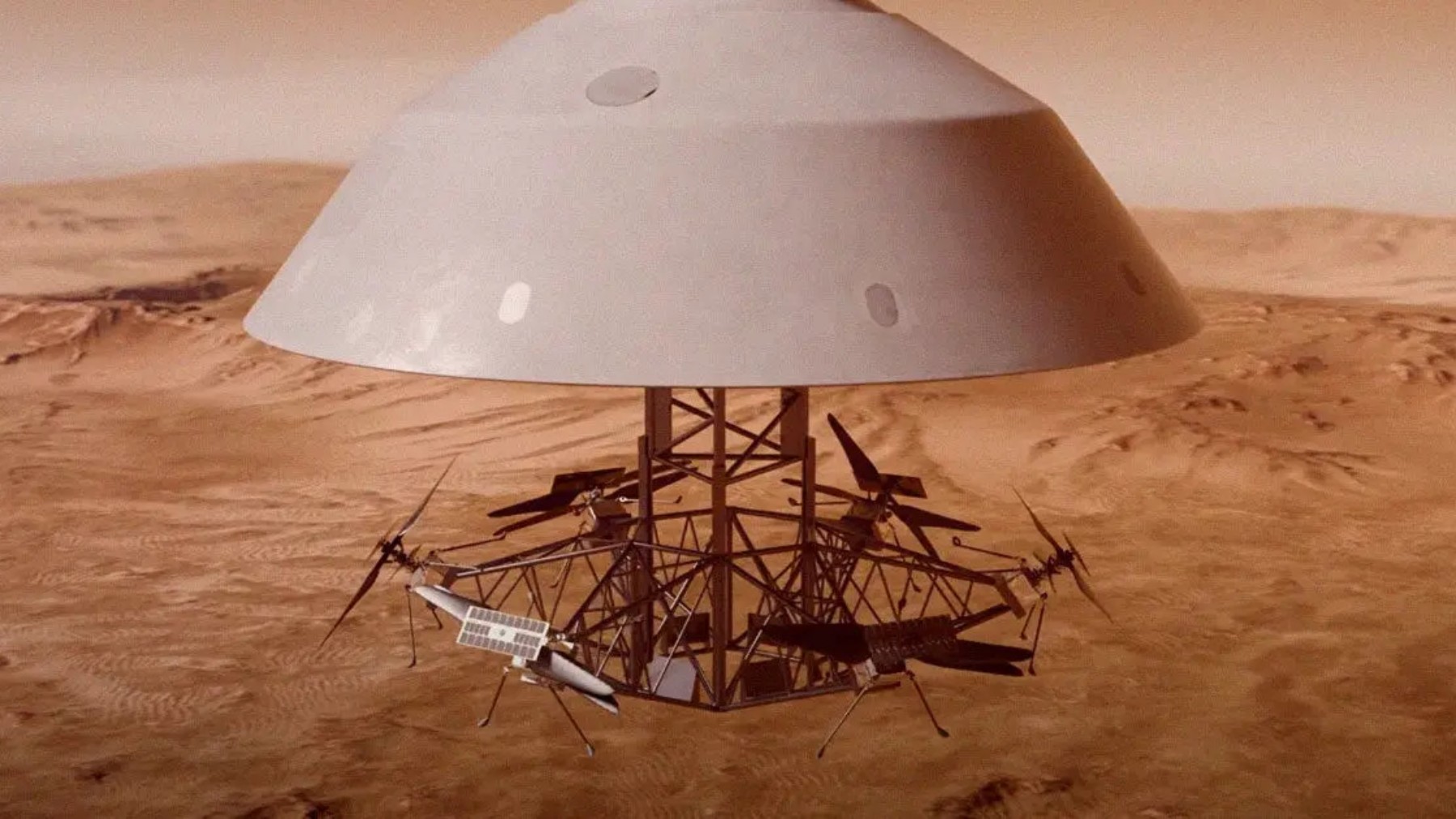Skyfall is a new mission… from NASA, not another chance to see James Bond face off against the villain Silva. That’s right, a new NASA mission that aims to change everything. After the success of Ingenuity, NASA and the company AeroVironment are proposing an even more ambitious concept: deploying six helicopters from space, directly during a spacecraft’s descent into the Martian atmosphere. What!? We’ll tell you everything!
Exploring Mars.. by helicopter!
This is a new manoeuvre that aims to cut costs, eliminate landing platforms, and expand aerial exploration capacity… Something very interesting but, it’s still in the conceptual phase! Anyway, it has stolen the show and captured everyone’s attention!!
Unlike traditional missions with rovers and landing platforms, Skyfall plans to release six small helicopters (yes, six!!) from a mothership while descending on Mars.
It all started with Ingenuity
When the small Ingenuity first lifted off on Mars in 2021, it was just a one-time test. But it ended up staying for three years, completing 72 flights and proving that flying on Mars was not only possible, but incredibly useful. What seemed like a simple demo became a practical example of what can be done with lightweight, well-designed technology.
Skyfall builds on that same foundation. The company AeroVironment wants to apply the lessons learned from Ingenuity, but on a bigger scale: six coordinated helicopters, flying from the start, ready to cover wide areas, study the terrain, and mark potential landing sites for future crewed missions.
So how would it actually work?
The manoeuvre they have in mind (they call it the “Skyfall Maneuver”) involves releasing the helicopters directly while the spacecraft enters Mars’ atmosphere. No waiting for a smooth landing. The advantage is that it eliminates complex and expensive steps, like descent platforms, and reduces the risks typically found in that part of the process.
These drones wouldn’t just fly around aimlessly: they’d collect scientific data, study the terrain, look for signs of water or past life… the usual things you expect when exploring a planet, but with much more flexibility.
Is all this already approved?
No, not even close. AeroVironment has started making moves on its own, with internal investments and plans for a possible launch in 2028. But, like almost everything related to space, it depends on whether funding is available. And with the budget cuts proposed by the Trump administration for NASA, the outlook isn’t very optimistic.
To get an idea: recently, the Jet Propulsion Laboratory held a sort of “clearance sale” of satellites. Not exactly the image of a well-funded agency.
What does Skyfall offer compared to other projects?
While others are betting on large, heavy helicopters (even an SUV-like one with six rotors presented by NASA) Skyfall is going in the opposite direction: small, light, cheap. And in a group. The idea is that this fleet of drones works as a team and covers more ground than a single large craft. William Pomerantz, from AeroVironment, sums it up simply: doing more with less. More exploration, more data, more science… without the complications of weight and cost from the big rovers.
Beyond science
What’s interesting about Skyfall is that it’s not just focused on the science. The ultimate goal is quite clear: pave the way for human missions. Because if these helicopters can map the terrain well, identify safe areas, and detect risks, they’ll be doing much more than an experiment. They’ll be making it easier for a human landing on Mars to not depend on luck.
Also, this cleaner approach helps avoid leaving unnecessary junk on the planet’s surface. Not a minor detail if we want to think about more sustainable exploration.
So what now?
There are still a lot of unanswered questions: how will these drones be controlled from such a distance? Will they withstand Martian conditions? Will they get the necessary funding to take off?
But one thing is clear: Skyfall has opened an interesting door. And if the project moves forward, we could be just a few years away from seeing a squadron of helicopters flying over Mars. Not with big fireworks, but with a very clear purpose: marking the path that the first humans to set foot on the Red Planet might someday follow.
